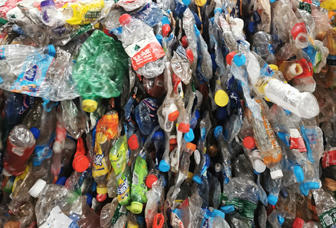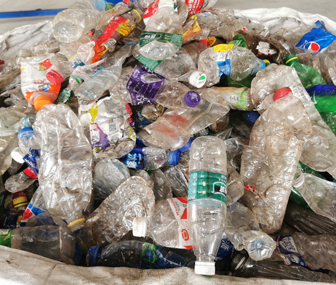Copyright © 2019-2022 Retech Machine. All rights Reserved.
A growing number of Asian countries are revising their "positions" on food-grade exposure to rPET.
India, Thailand, South Korea and other countries have revised food packaging, and food-grade rPET is a hot topic.
Demand for food-grade rPET will grow rapidly, perhaps 10-15 times by 2030.
Food-grade rPET has become widely accepted in the United States, the European Union and Japan in recent years, but the use of recycled plastics in food contact materials is heavily restricted in much of Asia. The lack of a "food grade" definition and regulatory authority, such as the European Food Safety Authority (EFSA) and the US Food and Drug Administration (FDA), has limited the trade and growth of rPET.
Japan is the only Asian country with a regulatory framework for food-grade recycled plastics. However, acceptance of recycled plastics in food appears to be taking a new turn across Asia: In 2020, South Korea's Ministry of Food and Drug Safety amended the law to allow the use of rPET in food contact materials; Thailand's Food and Drug Administration has also initiated a review process to consider the use of rPET and rHDPE in food contact materials. In September 2021, the Indian government also amended the Plastic Waste Management Code to allow the use of recycled plastics in food packaging.

India has previously opposed the use of recycled plastics in food contact materials. But now India's official attitude has changed 180 degrees. It is part of the Indian government's drive to promote sustainable development, which aims to reduce plastic waste and build a circular economy. India's circular economy has gone beyond the linear consumption pattern of "take, make, dispose" to a circular one. In September 2021, India became the first Asian country to adopt a national plastics convention. The Indian government has announced it will phase out the production, sale and use of certain single-use plastics from July 2022. The launch of the Indian Plastics Convention aims to unite Indian enterprises in the plastic industry chain and promote the transformation of circular economy.
With widespread acceptance of food contact materials, food-grade rPET demand is expected to increase dramatically, with some analysts projecting a 10-15-fold increase in demand by 2030.
Countries with bottle-withdrawal mechanisms tend to have the highest recycling rates, such as Germany, which has a 95% PET recycling rate. While demand for rPET will soar, plastic bottle recycling tends to be high in most major Asian countries and regions, unlike in Europe and the US. For example, the recycling rate of PET bottles in Europe is about 58%, while that in the United States is only 28%, while that in China and India is more than 80%. Therefore, future rPET resources in Asia are sufficient to meet demand.
RPET relies more on local recycling and sourcing than native polyester. Exports to Europe and the US, where demand for rPET is growing, will decline as new production capacity emerges across Asia.

Some European consumer brands have made a commitment to use 100% recycled materials. For example, Britvic plans to make all plastic bottles in the UK from 100% recycled PET; PepsiCo has committed to eliminating the use of native plastic in pepsi-branded PET bottles in Europe. Many people think these 100% promises are extreme.
In comparison with Europe, major Asian brands typically contain no more than 50 per cent recycled plastic. Varun, India's largest Pepsi bottler, has pledged to make at least 25% recycled materials by 2030; Coca-Cola India has pledged to include at least 50 percent recycled materials in its packaging by 2030.
Some multinational brands in Japan and Australia have launched bottles made from 100% recycled plastic, but from the point of view of extreme commitment, these markets are exceptional because the market is in developed countries. Japan's major brands, including Kirin, Suntory and Coca-Cola Japan, have set ambitious goals to reduce and in some cases eliminate their dependence on virgin plastics and fossil fuels over the next decade.
Although acceptance of rPET for food contact materials is increasing, the production of high-quality food-grade rPET remains a challenge in most parts of Asia. Asia has the highest rate of PET bottle recycling in the world and one of the key bottlenecks in the future will be production capacity. There is a lot of new investment going on in Asia to ease this constraint. In the future, a new wave of capacity expansion will come:
EcoBlue's production facility in Thailand has been officially put into operation, with an annual capacity of 31,000 tons of rPET and 10,000 tons of rHDPE and rPP. It is the first company in Thailand to obtain FDA certification and can produce food grade materials. Based in India, Srichakra recently became the first Company in India to be certified by the European Food Safety Authority (EFSA). A few months ago, Srichakra announced an investment of more than $10 million to upgrade and expand its recycling capacity... more capital has entered or is entering the food-grade rPET market.
Post-covid-19, with the recovery of the textile industry and rapid investment in rPET capacity, competition for rPET bottle flakes may intensify and affect trade activities outside the region. For example, increased demand for bottle flakes in Asia will likely lead to supply problems for rPET production in other regions, particularly for food-grade contact materials exported from Africa to Europe.
In short, the future wave of food-grade rPET will be in Asia, the region with the largest population in the world!
If you have any ideas about this topic, please feel free to contact us.